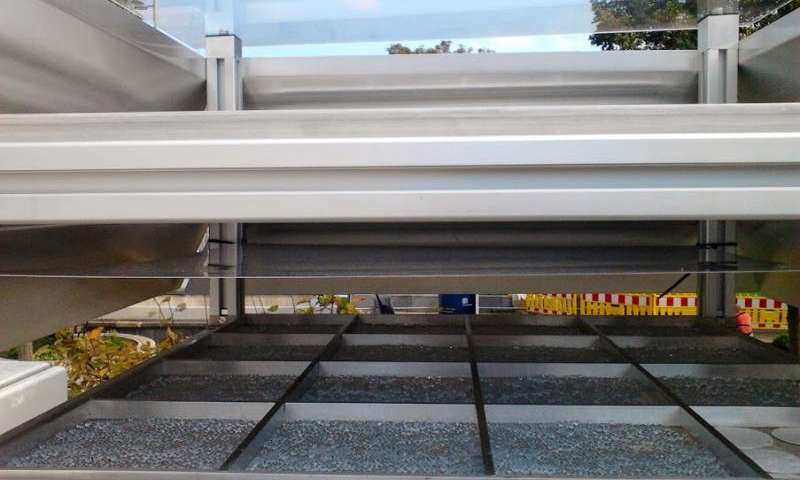Dirty buildings emit ozone when exposed to light, the main compound found in smog which is dangerous to public health. Up until now, grimy urban buildings weren’t included in models that assess how polluted an urban area is, but the new findings suggest their contribution is significant. Dirty buildings are thus not only unpleasant to look at, but also detrimental to your health.

Image: Flickr
In busy urban environments, grime naturally gathers on the surface of buildings due to the thousands of volatile compounds that litter the atmosphere. Thousands of substances make up grime, mostly gases exhausted from automobiles, factories and other human activities. Among these compounds is nitrogen oxides, which when exposed to light split the molecules into nitric oxide and an oxygen atom. The free oxygen atom then naturally combines with oxygen molecules to produce ozone. High up in the sky, ozone forms readily in the stratosphere as incoming ultraviolet radiation breaks molecular oxygen. This process shelters all livings things from harmful ultraviolet radiation. If there wasn’t any ozone in the stratosphere, we’d be in for a lot of trouble. At ground level, though, ozone is a pollutant and serious health hazard. It’s the main component of smog, a mixture that also includes sulfur dioxide, nitrogen dioxides and carbon monoxide.
The nitrogen oxides fixated in the grime on buildings was thought to be stable, but this new research led by James Donaldson, a chemistry professor at the University of Toronto, suggests otherwise. Him and his team first got a hint when they found nitrate anions disappeared from grime at faster rates than could be explained by wash-off due to rainfall. Subsequent examination in the lab revealed that the nitrate leached 10,000 times faster from grime than from a water-based solution when both mediums were exposed to light.

Glass beads collecting grime. Image: Alyson Baergen
These findings encouraged the researchers to experiment in the field. Grime was collected from the surface of various buildings in Toronto, Canada and Leipzig, Germany. The grime was collected using glass beads placed beneath grimy surfaces since the spherical beads have a greater surface area than a flat covering, say a window. Then, Donaldson left some of the collection devices out in the open sun, while others were left in the shade. Both setups leached nitrogen oxides into the atmosphere, but beads left in the sun produced 10% more.
“The current understanding of urban air pollution does not include the recycling of nitrogen oxides and potentially other compounds from building surfaces,” says Donaldso. “But based on our field studies in a real-world environment, this is happening. We don’t know yet to what extent this is occurring, but it may be quite a significant, and unaccounted for, contributor to air pollution in cities.”
“If our suspicions are correct, it means that the current understanding of urban air pollution is missing a big chunk of information,” Donaldson says. “In our work, we are showing that there is the potential for significant recycling of nitrogen oxides into the atmosphere from grime, which could give rise to greater ozone creation.”
Municipalities might want to include these findings in their environmental investigations, considering smog is an important health risk. According to the American Lung Association, 44% of Americans live in areas were smog levels are above safe levels. At the extreme, smog in China kills 4,000 people each day.
The findings were presented at the 250th National Meeting & Exposition of the American Chemical Society (ACS).









